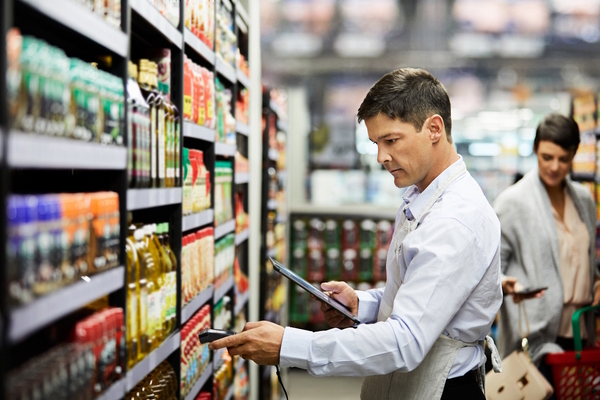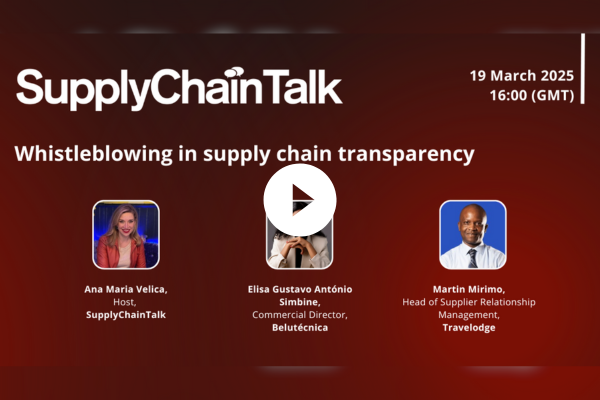Planning for a sustainable supply chain

Jim Bralsford at Kinaxis argues that sustainability and supply chains must go hand in hand
The end-to-end supply chain of many companies is usually responsible for much higher social and environmental costs than their own operations
Supply chains account for more than 80% of greenhouse gas emissions, according to figures by McKinsey. It’s evidence that supply chain planning and sustainability have a much closer relationship than organisations may have assumed previously.
Today, the role of the supply chain planner is pivotal in helping shape corporate sustainability strategy. Investment will only go so far. Spending millions to decarbonise the supply chain will potentially be wasted if daily planning decisions reverse the impact. With this in mind, how do planners step up to the plate and make a difference?
Clearing the path
One way of understanding where planners can provide sustainable value is by looking at the types of emissions that the supply chain needs to address. The Scope of Emissions model highlights the three different types of emissions associated with organisations.
Business leaders are much more likely to be aware and taking action in regard to scopes 1 and 2, which covers aspects such as fuel combustion, company vehicles and purchased electricity, heat and steam.
Scope 3 emissions, which include business travel, employee commuting and transportations and distribution, tend to fall under the radar. But they form the bulk of the emissions iceberg and must be addressed if we are to positively impact our planet.
Considering that some of the aspects of scope 3 are very much based around the supply chain as a whole, planners have an important role to play. Sustainability doesn’t just stop at the factory gates. It continues all the way through to delivery of a product or services to a consumer. Focusing on these scope 3 emissions helps clear the path to ultimately meeting sustainability goals.
Raising awareness
In order for planners to make a tangible impact to supply chain sustainability, it’s critical to gain and raise awareness of the issue. The first step is to attain transparency of the whole network. It’s only through this visibility that planners can understand how to make better decisions. It’s time to think beyond just carbon emissions and consider water usage, rare raw material consumption and renewable energy and materials across the whole chain.
Secondly, corporate sustainability strategy must evolve. Planners need a seat at the boardroom table, informing directors and working directly with the Chief Sustainability Officer (or the C-level executive charged with delivering the sustainability strategy) to ensure that sustainability initiatives are not falling foul of bad planning. It’s only with this input at the highest level that tangible change can then be delivered.
Taking action
There are numerous examples of great corporate initiatives currently happening in this area. Schneider Electric has committed to convert its 14,000 fleet vehicles to electric by 2030. Mars is building deeper relationships with fewer palm oil manufacturers to increase its ability to monitor and impact deforestation. Cisco enables circularity with a significant reverse supply chain.
For any initiative of this kind, the supply chain planner will be critical. The enabler to make these initiatives happen? Technology. Individual functional excellence has been a primary focus of organisations, but modern supply chain solutions should consider a holistic approach. Warehouse operations can be made as efficient as possible, but sustainability will ultimately suffer if, for example, transportation is not considered.
End-to-end visibility of a supply chain is made possible by technology and enables planners to take action to remove waste, whether it’s raw materials, fuel costs or employee time. Costly stock-outs and wasteful overstocks can be eliminated thanks to the ability to more precisely predict and balance supply and demand. Additionally, the most efficient route and delivery options for both forward and reverse logistics with real-time scenario planning can be identified.
Leveraging these solutions also helps to ensure that the wider supply chain meets environmental regulations such as the Corporate Average Fuel Economy (CAFE) for sourcing, clean air and emissions.
No longer an optional extra
Sustainable supply chains are simply no longer an optional extra. More corporate boardrooms are taking responsibility for environmental, social and corporate governance (ESG) in their organisation and are moving from corporate commitments to operationalising. At the same time, consumers are embracing sustainability more than ever.
Today, nearly 90% of Generation X consumers would be willing to spend an extra 10% or more on a sustainable product. What this means for businesses is that tangible strategies must be put in place to attract the attention of savvy suppliers, manufacturers and customers that are looking to partner and shop with companies committed to supply chain sustainability.
With the assistance of technology, planners can help enable a more mature, efficient and sustainable supply chain, and they need to be by the side of the decision makers to help enable the relevant measures to be incorporated across the network.
Taking steps to bring sustainability and supply chain planning together will enable businesses to reap the rewards, including reduced emissions, responsible operations and greener initiatives that better serve the humans that rely on these products and services.
Jim Bralsford is Senior Director, Industry Solutions at Kinaxis
Main image courtesy of iStockPhoto.com

Business Reporter Team
Most Viewed
Winston House, 3rd Floor, Units 306-309, 2-4 Dollis Park, London, N3 1HF
23-29 Hendon Lane, London, N3 1RT
020 8349 4363
© 2025, Lyonsdown Limited. Business Reporter® is a registered trademark of Lyonsdown Ltd. VAT registration number: 830519543





